
Meta Description: Find out about the full step by step guide to Chinese import to India in 2025, including insights into india’s total imports . Get familiar with the process of trade, documents, prices, trade rules, and successful guidelines to trade efficiently Italy to India trade.
Introduction to China-India Trade Relations
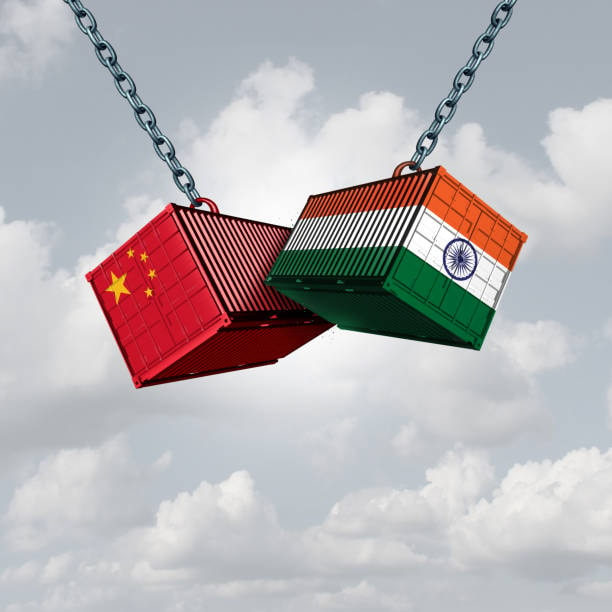
The commercial association between India and China is one of the largest business alliances in the whole of Asia with bilateral commercial engagements hitting high records over the past few years. China has continued to be the biggest trading partner of India, with china’s exports of imported goods playing a significant role. and the amount of imports brought in by China continuously makes big share in the total basket of Indian imports. The trade relationship here involves various elements such as electronics, machinery, chemicals, pharmaceuticals as well as consumer goods.
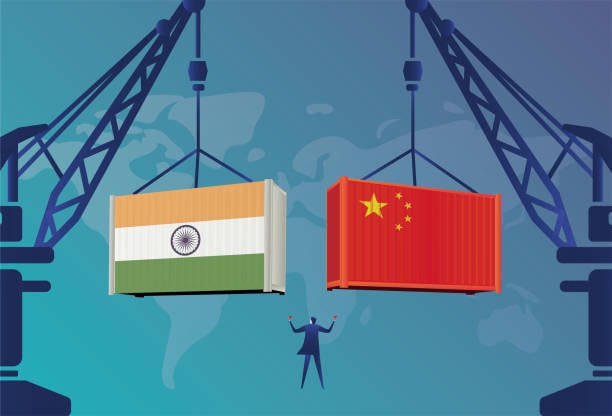
The importation of high value goods and services between China and India is very complex and any foreign company entering the business relationship needs to understand the complex process. The import involves various regulation frames, documents and logistics issues which need to be easily negotiated in order to have good trading effectiveness.
Current Trade Statistics and Market Overview
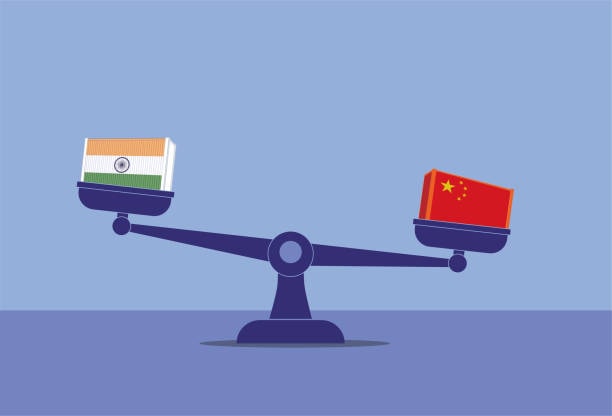
There has been spectacular enhancement in the China-India trade corridor in the last decade with China been the main supplier of imports in various categories to India. Recent trade data shows that china exports significantly, with bilateral trade between two countries already being more than 125 billion every year, whereby, India imports nearly 87 billion dollars worth of products of China in the financial year 2023-24.
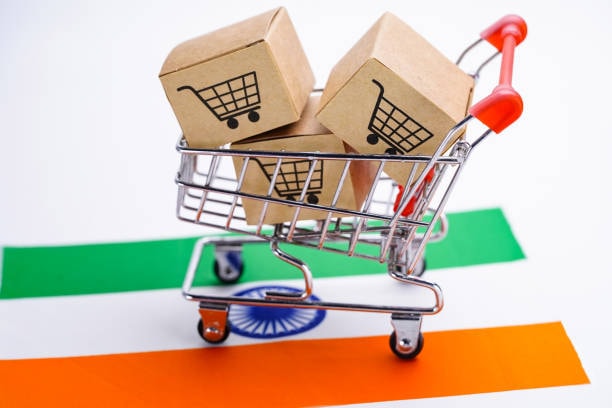
Some major imports categories are the electronic goods, machinery and equipments, organic chemicals, fertilizers and plastic goods, with the fourth largest import category being noted . The imbalance of trade is in favor of China with the Indian imports being much more than exports giving the Indian businesses the opportunity of procuring cost effective goods and the need of strategic planning of imports in terms of management of foreign exchange consequences.
Essential Documentation Requirements
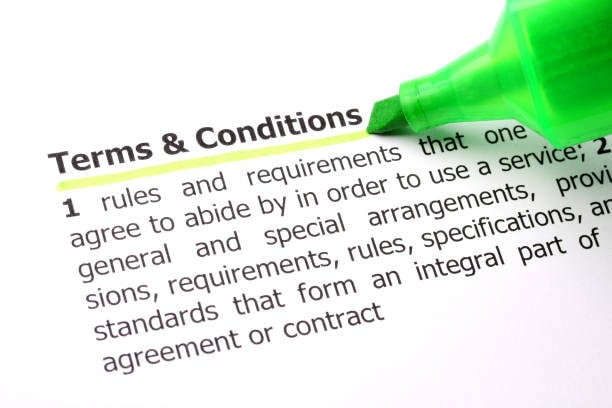
To import goods to India out of China, it is important that the customs duties and regulations have all its import license and documentation papers to go by to allow hassle free entry into the India clearances. The main documents shall be, Bill of Lading or Airway Bill which indicates the quantity and date of delivery, Commercial Invoice that establishes the price of the transaction, Packing List which specifies the nature and quantity of the material, including medical equipment as well as the Import Export Code (IEC) provided by the Directorate General of Foreign Trade (DGFT).
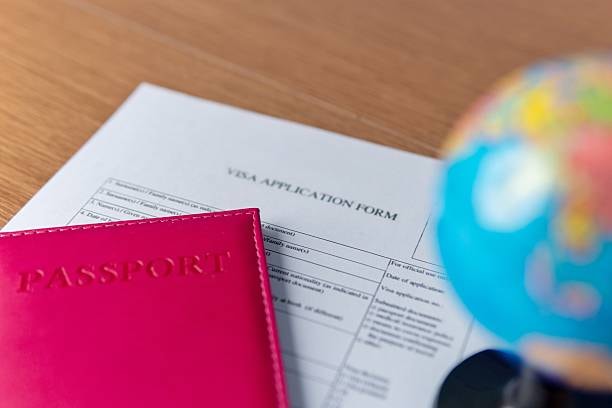
Further customs regulations might include documents such as Certificate of Origin, which is used to ascertain duty rates under any trade agreement, Product-specific certificates whereby a certification of prescribed product such as Bureau of Indian Standards(BIS) Certification is mandatory where a particular category is to be issued, and a comprehensive understanding of import duties. When it comes to customs clearance it is also vital to prepare documentation well in order to prevent delays and the extra cost that might be incurred.
Understanding Indian Customs Procedures

Indian custom clearances procedures on imports to China are structured procedures meant to help achieve hand in hands on the customs checks since the main aim is to help carry the legitimate imports of business. It starts with the filing of the Bill of Entry that should be paid electronically with the Indian Customs Electronic Data Interchange (ICEGATE) application prior to the delivery of the goods to the port of entry.

Customs officers perform risk-based evaluation to ascertain the requirement of examination and this assessment can be in form of physical examination and verification of documents or testing in labs depending on the type of goods and history of compliance. Assessment process evaluates the end result of the duty liability that is found out through some value of the transaction or its classification and there are duty rates that are applicable. Being familiar with these procedures, importers are in a position to do proper preparations thus escaping various drawbacks that may lead to their delayed or even punitive measures.
Comprehensive Guide to Duty Rates and Taxes

When importing goods across the borders between China and India, the import duty and tax form a huge cost element in the overall landed cost. The list of duties charged includes the Basic Customs Duty (BCD) which depends on the classification of the product, and on the available trade agreement as well as the Integrated Goods and Services Tax (IGST) which is assessed against the assessable value with additional duties. The Social Welfare Surcharge is charged if the products fall under that category.

Each duty rate in particular applies to specific goods and products based on the Harmonized System (HS) code of imported items whereby found items as of the present carry zero-percent up to more than 100 percent rates respectively. All of this is especially in addition to the anti-dumping duties that can be imposed on some of the Chinese products where dumping has been proved to have occurred. To price its products in accordance to the current competition present in the Indian market, and also upgrade its competitiveness, importers have to estimate their overall duty liability correctly.
Product Classification and HS Codes

The correct classification of products under the Harmonized System (HS) forms the basis of proper importing activities since it influences the rate of duty, regulations to be adhered to, and documents to be submitted. The HS code system has been applied as a six-digit use internationally and other countries have added additional digits in order to suit the national needs. India applies eight-digit HS classification into detail.
Failure to classify correctly may lead to wrong duty detail and, therefore, even fines, as well as delay of clearance. Importers need to perform a proper product quality analysis, including the medical apparatus imported get advice given by the customs brokers or trade consultants, and lastly consider the advance rulings given by the customs departments to classify the product accordingly. The frequent changes of HS codes and duty rates create a need to continuously monitor to ensure their compliance and cost-efficient structures.
Special Economic Zones and Trade Facilitation

The Special Economic Zones (SEZs) are also advantageous to businesses that import products into India, as they are associated with the duty-free importation of products in the context of export-oriented operations, facilitated custom procedures, and ease in adopting such mandatory measures. SEZ units are allowed to import goods without payment of custom duties in case of importation of goods meant to be used in export production or re-exportation.
SEZ model also offers a chance of setting up a manufacturing unit based on the inputs of China, producing value added product to cater to the domestic and foreign market. As further, bonded warehousing companies can store goods without paying duty at once, and it can be of great help to inventories control and cash flow management.
Electronic Goods Import Regulations

The electronic commodity, including consumer electronics, is one of the principal sources of imports in China to India packages where there are sizes of regulations that are put into place to regulate quality, safety, and security standards. Various electronic products are obligatory registered by the Bureau of Indian Standards (BIS) and the Chinese manufacturers have to gain BIS certification to allow their products to gain entry into the Indian market.
New regulations have brought about the aspect of trusted source requirements on some of the electronic products especially those connected with telecommunications and the field of information technology. The importers should make sure that their suppliers in China meet these demands and their certifications are up to date. The regulatory environment is also dynamic and the changes occurring in the policy thus there is need to monitor them actively to understand the effect the policy has on the import business.
Pharmaceutical and Chemical Import Guidelines
The Central Drugs Standard Control Organization (CDSCO) and the Directorate General of Foreign Trade (DGFT) protect pharmaceutical and chemical imports established in China by strict control. The drug import licenses of APIs and the finished pharmaceutical products must also conform to the Good Manufacturing Practice (GMP).
Additional permits may be needed depending on the classification of the hazard, environmentally inclined impact, and use applications of the imports into a chemical. The regulatory regime incorporates prior approvals prior to importing some category of products, testing of some products including continuous surveillance aimed at maintaining the quality and safety of the products. The importers need to implement powerful compliance systems and ensure keeping detailed invoices in order to comply with regulations.
Textile and Apparel Import Norms
Textile and apparel industry is a major part of goods traded between China and India, and there are special rules that guide and define importation process, quality and labelling. The textile and clothing goods have to meet the specifications of the Bureau of Indian standards as well as have the country of origin marking and should finish the restricted import policies in some cases regarding prohibited items .
Other policy measures have in the recent past brought about quality control orders in some of the textile products, which have come with the mandatory requirement of testing and certification of such before granting an import permission. The importers are also expected to collaborate with approved test laboratories and make sure that the Chinese suppliers are aware of the Indian standards of quality and are willing to follow them. There is still change in the nature of the regulatory regime with the emphasis of having local manufacturing without compromising on the quality standards.
Food and Agricultural Product Import Protocols
Any imports of food and agricultural products into India of China origin should be according to food safety measures by the Food Safety and Standards Authority of India (FSSAI) and Plant Quarantine Division of the Directorate of Plant Protection, Quarantine and Storage (DPPQS) for import products . FSSAI import licenses are required in importing food products and other standards prescribed on additives, contaminants, and labeling should be met.
Phytosanitary certificates, pest risk assessment and quarantine may be needed to avoid the introduction of harmful organisms in agricultural imports. The regulatory framework also consists of approval policies before import of specific categories of food, requirements upon importation (testing and screening) of food to check its safety and plant health, and continuing surveillance until the goods arrive . Imporation needs to have in place competent quality assurance systems and assure traceability within the supply chain.
Logistics and Shipping Options
The keys to a successful operation of importing items in China to India through the logistics management process are essential activities and various modes of transportation to use depending on the nature of the business needs. The best option in terms of shipping bulk goods is still sea freight and the Chinese major ports located in Shanghai, Shenzhen and Ningbo have direct shipments services to the Indian ports like Nhava Sheva, Chennaiand Kolkata.
Air freight offers a quicker transit time of goods that are considered highly valuable or sensitive compared to other means of transport, but they are more expensive. The China-Europe Railway transport alternative presents a compromise between sea and air transportation since it has the benefit of offering a quicker delivery time as compared to sea transportation but at a lower cost as compared to air transport. When choosing suitable logistics solutions, it is necessary to take into account such aspects as the size of shipments, their urgency, the specifics of products, and the implications of the overall price range.
Port Operations and Clearance Procedures
Modern infrastructure and technology systems have been adopted at Indian ports to make the cargo handling and the process of customs clearances efficient. In the main China-India trade ports, there are special container terminals, automatic documentation processing systems, and clearance facilities that operate around the clock to keep dwell times – and associated expenses – to a minimum.
Faceless Assessment system has made customs easy, as it has made assessment remotely and eliminated the need of extensive physical contact. Security and regulatory oversight are allowed via the Risk Management Systems (RMS), which allows faster clearance to the compliant importers. Trying to know the procedures required and documentation requirements in the port as well as operational times enable importers to streamline their supply chain operations and minimize on cost incurred in the supply chain activities.
Payment Methods and Currency Considerations
The mode of payment in terms of China-India trade has also become flexible to suit the variety of needs in terms of business, regulatory compliances, and risk. Letters of Credit (LC) and Documentary Collections are the traditional methods and they are more secure to both parties but cost more money due to increasing cost of the transaction and take longer time to process.
Other sources of payment alternatives are bank transfers, trade finance facilities and digital payment platforms which are faster and less expensive. Factors of currency count on fluctuation of exchange rates, hedging and regulatory consideration on foreign currency transactions. Importers should be in a position to balance cost aspect and risk management requirement when choosing which methods of payment to use.
Quality Control and Inspection Services
Imports quality control has to be done to be able to match Indian standards and customer expectation, including the choice of shipping method . Pre-shipment inspection also facilitates to correct quality problems in Chinese factories before they go to the ships and even before they are shipped their goods, thus reducing potential shipping costs and the probability of the rejection of goods and associated cost can be avoided. Third party inspection agencies also provide services that investigate the product in use, factory audit as well as compliance checks.
Post-arrival inspection by the customs authorities in India is done on the principle of risk assessment of the commodities, such as physical test, laboratories, verification of the documents. To establish sound quality assurance systems with Chinese suppliers, such as specification, tests, and corrective actions, minimizes the possibility of quality related problems and thus provides conformed quality of their products.
Legal Compliance and Regulatory Framework
Importing businesses involving China require compliance with the Indian legal and regulatory requirements, as well as achieving competitive pricing as core factors toward an effective importing business. The law system comprises the customs laws, foreign exchange laws, standards on products as well as the laws on environmental good behavior. New policy implementations have created more requirements of adherence especially in electronic, pharmaceutical and telecom based products.
The importers need to implement detailed compliance mechanisms which involve a periodic check of changes to regulations, proper record keeping as well as an application of solutions to the problem when necessary. Professional advisory services and legal consultation may be utilized to simplify complicated regulatory postulates and guarantee future comports with emerging policy spectrums.
Risk Management and Insurance Options
International trade has numerous risks such as damage of cargo, theft of cargo, delay in cargo as well as changes in regulations which may affect businesses. Cargo insurance may cover physical loss or damage of goods in transit, trade credit insurance may cover non-payment by suppliers or purchasers.
Political risk insurance might be applicable where the business is worried about the change of policies or trade issues that may influence the trade relationship between China and India. Risk management plans should encompass risk analysis, risk reduction programs, insurance covers, and contingency plans aimed at ensuring that any form of disruption to the activities of the supply chain is dealt with and handled.
Technology and Digitalization in Trade
Digitization has turned China-India trade activities into automation, electronic documentation, and real-time tracking of the activities. In India, customs have introduced electronic systems of document submission, payment of duty, and the process of clearance agent that have led to the minimization of time and created transparency.
Blockchain solutions are proposed to trace the supply chain, facilitate smart contracts to automate trade transactions, and allow using digital documentation to increase the security level and efficiency. Machine learning and artificial intelligence can also be used in logistics processes to clarify logistics routes, forecast demand, and find probable compliance-related problems. The adoption of digital technologies may become a source of competitive advantages due to increased efficiency, lowered expenses, and better customer service.
Sustainable and Ethical Trade Practices
Sustainability also becomes more of an issue in China-India trade, affecting domestic production, and an incremental focus is being proposed on environmental protection, social responsibility, and ethical business practices. Some of the Indian regulations are requirements of environmental clearance of some products, prohibition of hazardous substances, and encouragement of eco-friendly alternatives.
Corporate social responsibility programs entail supplier audit, compliance of labor standards and community development programs. Sustainable trade activities do not only offer regulatory compliance, but also help in increasing the brand reputation as well as building customer loyalty. Companies ought to work out elaborate sustainability plans which support environmental, social and governance (ESG) needs all through the supply chain.
Common Challenges and Solutions
Challenges of importing products from China to India are numerous such as regulatory burden, challenges on quality assurance, delays in logistics as well as communication inefficiencies iron and steel products. The regulatory issues can be resolved with professional advisory services for small business owners , constant monitoring of compliance and working proactively with regulatory authorities raw materials.
Quality control problems elevate needs of strong selection processes of supplier suppliers, clear specifications, periodic checks and proper communication channels united nations comtrade database. The pressures of logistics can be mitigated by means of diversification of transport, contingency planning as well as cooperation with reputable logistics services providers. The amount of cultural and communication barrier can be resolved by using cultural education, local representation, and relationship investment indian plastic imports.
Future Trends and Opportunities
China-India the trade relationship is still growing, and new opportunities are emerging in a reliable platform new business field such as renewable energy, electric cars, and digital technologies importer exporter code. The program to cover value added manufacturing called Production Linked Incentive (PLI) scheme is providing opportunities to use reliable suppliers and Chinese inputs import export licence.
Technology such as automation, artificial intelligence, and block chain are likely to streamline trade activity further and decrease expenses. The need to implement environmental laws and sustainability is bound to grow and this offers a chance to gain ground on environmental products and technologies. Companies are advised to be informed of such trends and adjust their strategies to take advantage of new opportunities presented by such trends and handle the risk involved active pharmaceutical ingredients.
Professional Services and Support
A professional service like customs brokerage, freight forwarding, legal advisory and financial services are normally needed during successful importing operations shipping process. The customs brokers offer services in regulatory compliance, preparation and filing of documentation and clearance requirements so that importers can face the complicated requirements in a competent way.
The services that are provided by the freight forwarders range across to include transportation services, warehousing, and distribution services. Legal counsels offer advice on legal regulation action, contract management and dispute handling china accounts. The financial service providers provide trade finance solutions, currency hedging and payment processing services based on the needs of the international trade.
About Shenzhen Guanwutong International Freight Forwarding Co., Ltd.
GWT Worldwide is a corporate logistics service provider in global freight forwarding, supply chain and cross border e-commerce logistics. We have knowledge on China-India trade routes and this has ensured that we are capable of providing full range of services including air freight, sea freight, and China-Europe railway services as well as international express services, customs clearance services, and warehousing import process. Effective, efficient, transparent and customers satisfaction guarantee with the new logistics technology and a large network of reliable partners worldwide will support the businesses of all sizes involved in the trade activities between China and India, in a reliable and cost effective manner import iron.
Best Practices for Successful Importing
Effective importing of China to India needs to be systematic approach such as proper market research, proper selection of suppliers, and enhanced quality control mechanisms, and compliance management. The best practices entail ensuring that current knowledge about regulatory requirements is maintained, that close contacts with Chinese suppliers are created, that the communication systems are effective and that contingency plans are created in case of disruption.
Periodic performance reviews, ongoing improvement measures and risk management measures are some of the activities that are likely to guarantee success in import business when it comes to the long run market demand. The entrepreneurial companies are advised to put in place aspects of professional development, technological systems, and coalition into strategic partnerships to improve their competitive standing in the active China-India trade scenario.
Conclusion
Trade imports of the China country to India provides great opportunities in the market to business people who desire to find competitive products, new and improved technology, and cheap nature of the solutions. To be successful, it is important to have an excellent command of government regulations, efficient relationships with suppliers and quality control mechanisms, as well as professional logistics. The changing trade between China and India is bringing both opportunities and destructive blocks which need perfect navigation and planning of the evolvement.
The enterprises should ensure that they are updated with the policy changes, make investment in the system to comply, and establish good rapport with reliable providers of services to get the most out of the China-India trade. Through adequate preparation, expert direction and planning, the import of goods in China can lead to the growth of business activity and competitiveness in the Indian market.


Thank you for reading!
Have questions, corrections, or better ideas? We’d love to hear from you!
We value every piece of feedback and promise to reply within 24 hours. Let's make this guide better together!
Note: Spam comments will not be published.